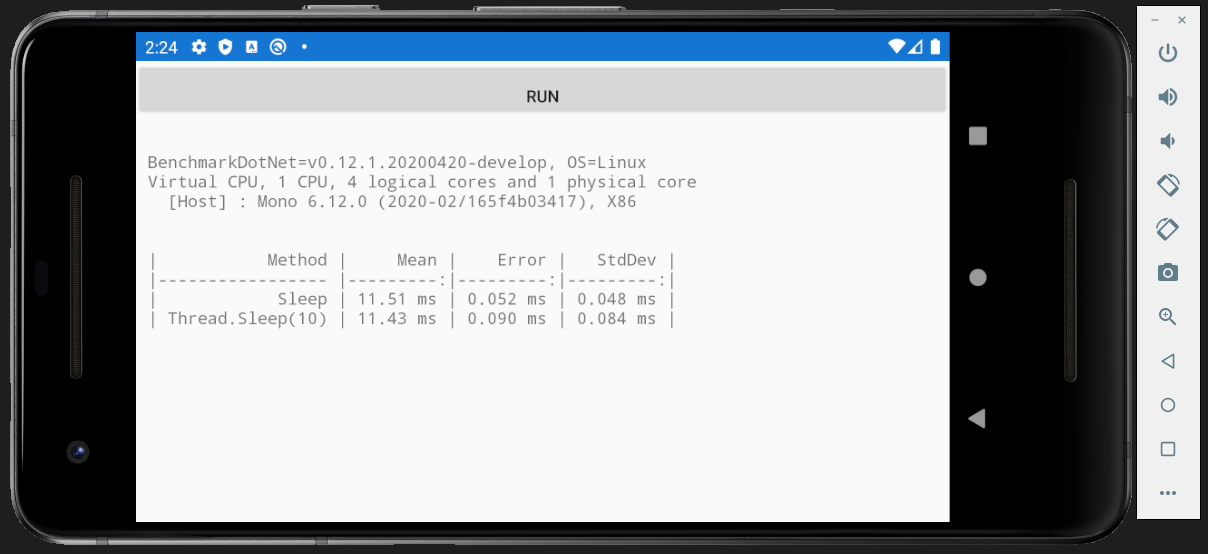Sample: IntroXamarin
To use BenchmarkDotNet with Xamarin, you will need to build a small UI for running Benchmarks and displaying the results so you can actually read them. Using Xamarin.Forms is a simple way to be able to run your benchmarks on iOS or Android.
Other notes:
- Use
Releasebuilds when running actual benchmarks. - Disable the linker via the
Don't LinkorNone.
Source code
using BenchmarkDotNet.Analysers;
using BenchmarkDotNet.Configs;
using BenchmarkDotNet.Exporters;
using BenchmarkDotNet.Loggers;
using BenchmarkDotNet.Running;
using System;
using System.Linq;
using System.Threading.Tasks;
using Xamarin.Forms;
namespace BenchmarkDotNet.Samples.Forms
{
public partial class MainPage : ContentPage
{
public MainPage()
{
InitializeComponent();
}
async void Button_Clicked(object sender, EventArgs e)
{
SetIsRunning(true);
try
{
var logger = new AccumulationLogger();
await Task.Run(() =>
{
var config = default(IConfig);
#if DEBUG
config = new DebugInProcessConfig();
#endif
var summary = BenchmarkRunner.Run<IntroBasic>(config);
MarkdownExporter.Console.ExportToLog(summary, logger);
ConclusionHelper.Print(logger,
summary.BenchmarksCases
.SelectMany(benchmark => benchmark.Config.GetCompositeAnalyser().Analyse(summary))
.Distinct()
.ToList());
});
SetSummary(logger.GetLog());
}
catch (Exception exc)
{
await DisplayAlert("Error", exc.Message, "Ok");
}
finally
{
SetIsRunning(false);
}
}
void SetIsRunning(bool isRunning)
{
Indicator.IsRunning = isRunning;
Run.IsVisible =
Summary.IsVisible = !isRunning;
}
void SetSummary(string text)
{
Summary.Text = text;
var size = Summary.Measure(double.MaxValue, double.MaxValue).Request;
Summary.WidthRequest = size.Width;
Summary.HeightRequest = size.Height;
}
}
}
Output

Links
- Xamarin.Android linker settings
- Xamarin.iOS linker settings
- The permanent link to this sample: Sample: IntroXamarin